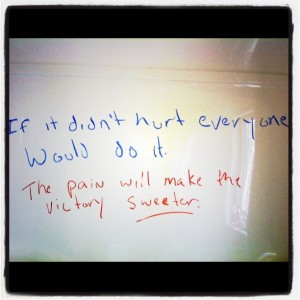Bucket List
I think an individual’s potential might be limitless. It’s cliche, but the only thing holding you back is yourself. Your fear, your inhibitions, your preconceived notions.
What if we were to dream big? What would you say if someone asked you what you would love to do more than anything?
We all have our priorities, and those are important. My biggest goal in life is to raise my daughters to be strong, independent, confident women. I don’t care what sports they play or if they’ll get straight A’s in school. I just want them to love themselves as they are in this mixed up and confusing world. That’s all. That’s the most important thing. I wish them happiness and love and children and a positive life-long relationship with a supportive and loving partner, yes. But above all else, I want them to love themselves.
Teaching them to love themselves involves more than talking. They absorb so much from what they see, what they sense in our home. I am such a huge influence on them, on their perception of women, their perception of relationships, of mothers, of how one should treat other people. That’s an immense responsibility. It scared me at first, when I held Leila in my arms as a newborn, to realize all that parenting involved. What if I messed up? What if I couldn’t do it?
I’m far from perfect, and I have definitely messed up at times. I’m honest about my flaws, and they usually rear their ugly heads when I’m very tired and trying to make dinner and the kids are whining. Sometimes I growl at them when they don’t deserve it, sometimes I let them watch too much tv. Sometimes I send them to bed early because I can’t wait any longer for some quiet.
Failure is ripe with emotional connotation. But I think that one of the most important things to realize is that failure isn’t permanent. Did I fail at my 32k run yesterday? Yes. Do I fail my children sometimes by losing my temper or lacking patience? Yes. But I’m not a failure as a runner. I’m not a failure as a mother.
We all struggle, it’s part of life. We struggle because somethings are hard and we have lessons to learn and we need to gain perspective and for a million other reasons. But there is always a new day to try again. The most important thing to remember is that you can keep trying. The moments that I yell at my children are far outnumbered by the moments we laugh and read books or play dollies together. The bad runs are far outnumbered by the good runs.
So what if someone asked me to make an outrageous goal? What if I asked that of myself?
What if, at nearly 30, the very first thing I put on my Bucket List was to run a marathon in every province and territory?
What if I thought that I just might be able to do it?




 tually, he’s been around for a few years but they made it official six weeks ago). She brought this dip with her and generously allowed me to keep the leftovers (I may have strong-armed her a bit).
tually, he’s been around for a few years but they made it official six weeks ago). She brought this dip with her and generously allowed me to keep the leftovers (I may have strong-armed her a bit). Our Magazine
Our Magazine Previous Release
Previous Release
